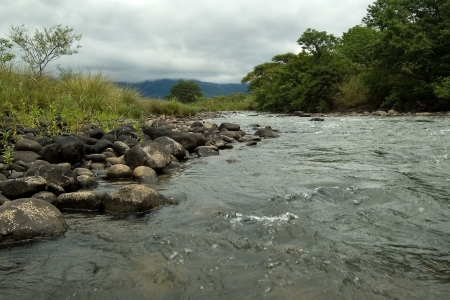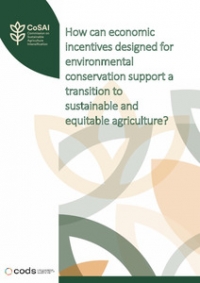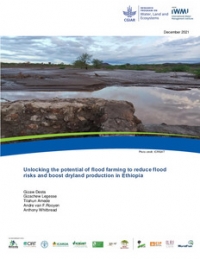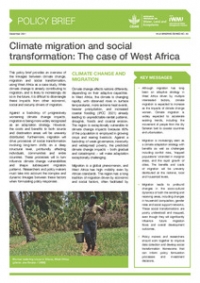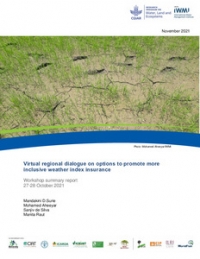This blog is part of the Agriculture and Ecosystems Blog’s month-long series on Restoring Landscapes.
Synergies and Tradeoffs at Scale
There is a growing sense of optimism in the environment community about prospects for safeguarding ecosystem services in agricultural production systems. Owed largely to the Millennium Ecosystem Assessment and most recently the Economics of Ecosystems and Biodiversity, the importance of ecosystem services — provisioning, regulating, supporting and cultural — for sustaining productivity of agro-ecosystems is now greatly appreciated in the agriculture community.
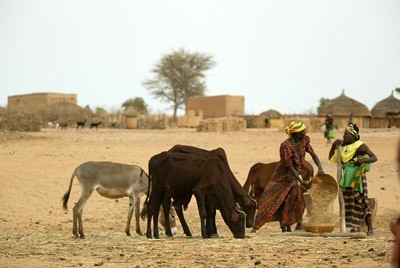 Women thresh grain in Niger in the Savannah Drylands Photo: ILRI/Stevie Mann
Women thresh grain in Niger in the Savannah Drylands Photo: ILRI/Stevie MannAlthough global commitments to agricultural development have the potential to vastly improve land area under production through sustainable intensification, the risk of ecosystem service degradation is likely to increase in parts of the developing world if intensification is pursued without adequate consideration of global environment benefits. Such a risk will ultimately undermine the livelihoods and food security of millions of smallholder farmers, especially in the dryland regions.
The Challenge of Drylands
To mitigate risks of ecosystem service degradation, we need to ensure that tradeoffs are managed through informed land use, especially in high potential agricultural areas, such as the Guinea Savanna zone in Africa.
The Guinea Savanna zone in Africa was described in a recent FAO/World Bank publication as the “sleeping giant” for commercial agriculture, with potential to transform the economy of many countries. Yet, the Guinea Savanna is home to millions of farmers and pastoralists that depend on small-scale production practices and wildlife utilization. Its spectacular ecology and rich biodiversity is a major source of revenue from nature-based tourism for many countries.
Furthermore, the Guinea Savanna contains some of the world’s largest stocks of below-ground carbon, estimated at over 200 gigatons. Hence, the region is both a major asset for sustainable development in Africa, and a source of important global environment benefit.
In order to fully harness environment and development benefits of the Guinea Savanna, efforts must be made to promote sustainable intensification practices that will increase food production without degrading the multiple ecosystem services.
Managing Tradeoffs
In the face of increasing threat from global climate change, there is a growing impetus for triple wins in such production systems - increased productivity, enhanced climate resilience and greenhouse mitigation. This is being promoted as Climate-Smart Agriculture, which is “….agriculture that sustainably increases productivity, resilience (adaptation), reduces/removes greenhouse gases (mitigation), and enhances achievement of national food security and development goals.”
Although such triple wins are possible in areas where interventions are appropriate and adequate to meet the needs of land users, tradeoffs are inevitable when the interventions seek to maximize a particular benefit.
For example, the use of tree-based practices such as agroforestry for improving soil fertility can lead to higher crop yields, and also contribute to carbon sequestration as climate mitigation benefit. But tree-based practices are also likely to impose tradeoffs on food production if the emphasis is on maximizing carbon benefits.
Sustainability through decision-support
Because of the diversity of practices available to land users and the dynamic nature of production landscapes, informed choices must be made on options that will minimize tradeoffs in land, water and biomass production.
The challenge now is to develop or deploy appropriate tools for monitoring and quantifying the environment benefits in a manner that will support decision-making about land use options. This will ensure that flows of ecosystem services are within the limits of sustainability, and enable poor farmers and land users to take advantage of existing incentive mechanisms and emerging markets opportunities.
In this regard, tools for monitoring and quantifying soil carbon, water, and biodiversity benefits in agro-ecosystems are particularly critical, and must be developed to accommodate the potential for harnessing synergies and minimizing negative tradeoffs.
There are a plethora of tools already available for this, but how can be these made accessible to land users and appropriate to different agro-ecological contexts? Is the scientific community prepared to standardize the tools and indicators to enhance consistency in their use for decision-making?
This Blog draws largely from a recent publication entitled “Two Decades of Experience: Investing in Ecosystem Services and Adaptation for Food Security,” published by the Global Environment Facility (GEF). But the views expressed are solely those of the author.






